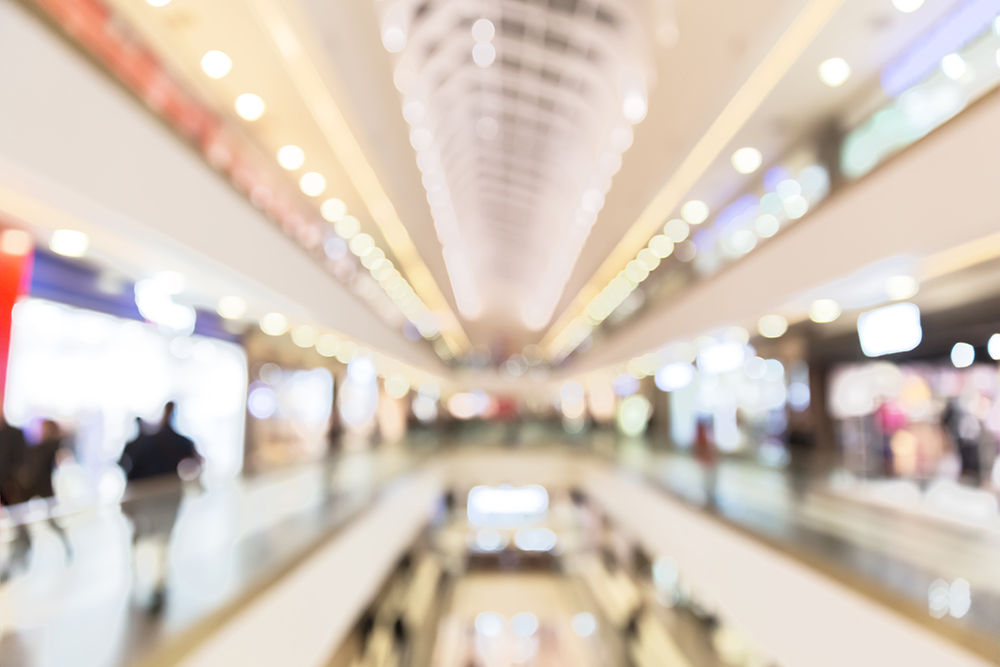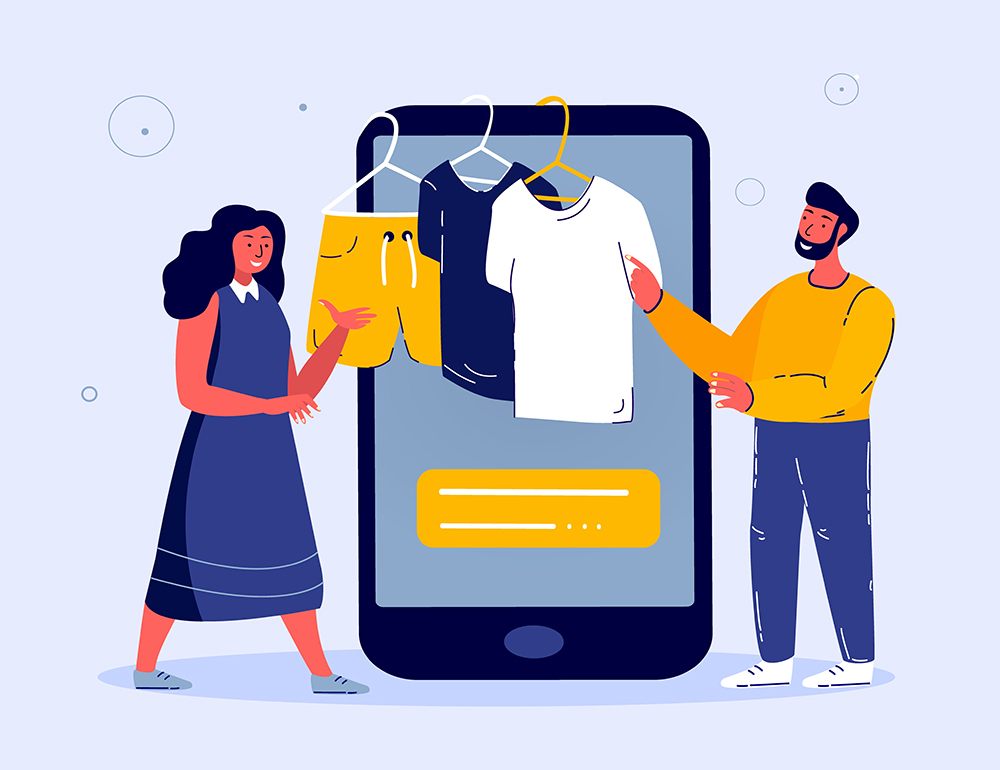How DTC brands can retain customers as the world reopens
As more brick-and-mortar stores reopen and lockdown measures lessen, what must DTC brands do to retain customers and remain competitive in the market?

The global pandemic brought strict lockdown measures and caused economies to close. With stay-at-home orders in place, people flocked online to complete daily activities such as school, work, and shopping. In the UK, which experienced one of the stricter lockdowns globally, consumers spent over 153 million dollars online in 2020, a 48% jump from the year prior.
Research showed that 52% of consumers avoided brick-and-mortar stores due to the pandemic. However, the behavior may change with economies reopening and people getting vaccinated. A Statista study stated that 91% of shoppers are comfortable going back to in-store shopping once vaccinated.
The gradual lifting of restrictions worldwide is already giving promise for in-store shopping. Forbes discussed a Zenreach study that showed how foot traffic to retail, restaurant, and entertainment locations has increased by 44% since the start of 2021. The US National Retail Federation also projects a 10.5% to 13.5% increase in offline shopping.
With more economies reopening and a seemingly imminent return to offline shopping, how will Direct-to-Consumer (DTC) brands obtain and retain customers to keep up with the competition?
Online vs. offline shopping
Retail industry consultant and author Steve Dennis believes that in-store shopping will see a resurgence soon. Although Dennis believes that shopping online will remain well above pre-pandemic levels, it will slow down.
After over a year of lockdowns, people understandably crave connected, in-person experiences, including shopping at brick-and-mortar stores.
Smart Insights discussed why people prefer shopping offline, showing that:
- 55% of consumers want to try on products.
- 23% enjoy the in-store experience of shopping for their items and browsing related products.
- 11% want to engage with a salesperson for customer support and find out more information about the brand.
DTC brands that understand these pain points can offer customers various solutions to help the company see continued success as the world reopens.
Immersive experiences benefit online retailers

Augmented reality (AR), for instance, can bridge the gap between offline and online experiences using virtual try-on features.
A study on the influence of AR showed that 71% of consumers would shop more often if a store uses AR. The study also showed that AR drives impulse shopping, with 72% of consumers saying they purchased items they did not initially plan on buying because of a site’s AR features.
“AR is going to become ubiquitous to the point of becoming an integrated expectation of the buying experience,” said Ben Houston, founder of 3D and AR provider Threekit. “Brands that want to connect with customers today and tomorrow need to move now on AR.”
Cafe24 merchants who want to reap the benefits of AR experiences can do so with Lololooks. The AR began with a jewelry try-before-you-buy feature but has since expanded to other fashion items like hats and glasses. Lologem also extended its AR service for home interior items, providing conversion opportunities for brands in niches like living and home interior products.
Fostering stronger customer relationships for better retention
While providing AR experiences can help bridge the gap between online and offline shopping, DTC retailers must find other ways to foster customer relationships to keep consumers coming back. Customer retention strategies are a must for brands to maintain or elevate sales before shoppers go back to brick-and-mortar shopping.
Some ways for brands to connect more with their audience include:
Improving brand storytelling
Fiona Stevens, Head of Marketing at Loyalty Lion, believes that storytelling and authenticity are the secrets to retaining customers. By communicating the brand’s story and values, customers can develop a deeper connection that drives them to continue supporting the brand. A study showed that people who love a brand story are 55% more likely to make a purchase in the future, with 44% more likely to share the brand, and 15% likely to make an immediate purchase.
Providing loyalty perks
A Loyalty Lion study showed that 74% of consumers will keep shopping from a brand if they are working towards a goal or reward. Loyalty perks can include early access to sales or new product releases, access to exclusive content, and earning points that can be exchanged for discounts or other rewards.
Valuing customer feedback
Listening to consumers and their feedback highlights how a brand values its customers. Cafe24 merchant Brownbag Coffee does this by monitoring customer reviews daily and using those insights to improve their products. The brand also features user-generated content (UGC). By showing a commitment to continue providing shoppers with valuable shopping experiences, brands can develop long-term trust and retain customers.
Focusing on personalization

A Smarter HQ study showed that 90% of consumers are willing to share information if it means having a more effortless shopping experience. The report also noted that 72% of customers only engage in personalized messaging.
Take email marketing, for example. A brand does not need to send emails to every customer but rather segment the mailing list according to consumer behavior. If the brand is currently promoting products for women, then the men on the mailing list should not receive the email. One report showed that personalized messages generate 6x higher transaction rates and convert better than cold emails.
According to Director Woo Sang-Taek of HumusOn, the creator of TasOn marketing automation, personalization is no longer about segmenting audiences according to people of the same age group, gender, etc. “Hyper-personalization really means improving the customer experience with a different message for each individual. When hyper-personalization is added in real-time, it can be immediately known which products the person is interested in, which can lead to more meaningful marketing. This is because interests change in real-time depending on the individual.”
The TasOn service is available through the Cafe24 ecosystem and sends automated and personalized emails based on a customers’ shopping behaviors. Customers that abandon their cart or have not visited the store in a while can receive these messages. Merchants can also use the service to offer customer-specific discounts and offers.
Personalization is not just limited to email marketing, especially now that technology capabilities have pushed the boundaries to possibilities. Below are some personalization tactics that can help boost sales and encourage customers to continue shopping via DTC.
Geo-location targeting
One of the perks of DTC is the ability to reach global markets. By personalizing the content of the storefront according to where a consumer is from, shoppers can see the products and campaigns that best fit their needs.
With Cafe24’s Global Sales Assistant service, merchants can build multilingual storefronts, integrate foreign payment systems, set customs clearance, optimize shipping, and price products according to foreign exchange rates in a few clicks. This way, customers can shop from international brands without worrying over expensive shipping fees or limited payment options.
Product recommendations
An Accenture study showed that 75% of customers are most likely to buy from a brand based on personalized recommendations. These recommendations are based on browsing behavior, previous purchases, complementary products, or even items viewed by others who also bought the same product.
At a Cafe24 webinar that discussed key points for successful global expansion, General Director Kim Noah of women’s clothing brand Chuu highlighted the value of data-based sales strategies. Chuu reviews store data every day, extracting information on popular product types and colors. “We implement this information in product production or change our online product display to increase revenue,” said Kim.
The Cafe24 Store offers various tools, such as Groobee, to help merchants with automatic recommendations based on a customer’s previous interactions.
Real-time customer support
According to Drift’s 2020 State of Conversational Marketing report, using chatbots as a communication channel jumped from 13% in 2019 to 24.9% in 2020.
A Userlike survey showed that 68% of customers found real-time support as the most positive aspect of chatbot interactions. A chatbot’s ability to answer queries outside of standard customer service hours was another highlight.
Chatbots can drive retail sales using push factors like upselling, marketing, and cart recovery strategies. With the increase in usage, Juniper Research predicts that e-commerce transactions via chatbots will reach 112 billion dollars by 2023.
Merchants who want a share of that market can turn to Cafe24’s Global Customer Management service, which features integration with ZOYI’s Channel Talk. The messenger-based solution that uses chatbot technology enables merchants to provide real-time, one-on-one customized consultation, automated responses to FAQs, and real-time tracking of shopping behavior.
Stay ahead of the trend with Cafe24
While some markets are beginning to transition out of pandemic restrictions, a complete reopening of economies is still uncertain due to growing concerns over new and emerging COVID variants.
Whether or not sales have slowed due to people returning to offline shopping, DTC brands must prepare for the eventual change in consumer behaviors. Cafe24’s ecosystem of experts and partners helps fight this situation, giving brands extensive support and access to insights, strategies, and tools that have brought proven success to other retailers.
With Cafe24’s partnerships, comprehensive suite of solutions, and commitment to continuous improvement of services, merchants can easily navigate this transition period to retain customers and increase their market share.
